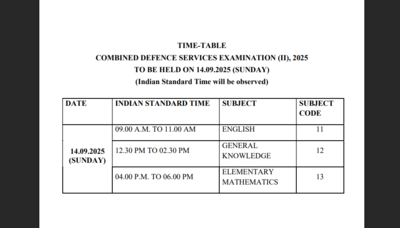The question matters now more than ever, as students across the globe weigh their future amid rising tuition fees, stricter immigration policies, and an increasingly competitive job market.Not everyone is lucky enough to be born in a country with a world-class education system and for millions of students, especially in developing nations, studying abroad is more than a dream; it’s a lifeline to opportunity, independence, and personal growth.According to the latest 2024 CEOWorld global education rankings, here are the top 10 countries that are acing the education game, based on two key indices: Quality and Opportunity.
1. United Kingdom
Quality Index: 78.2Opportunity Index: 69.79Home to Oxford, Cambridge, and a long tradition of academic excellence, the UK tops the 2024 rankings. With a robust public education system, global research powerhouses, and generous scholarship opportunities, it’s no surprise the UK continues to attract students from over 200 countries.According to the UK’s Department for Education, the country ranks second globally in academic citations. Faculty credentials across Russell Group universities are among the highest in Europe and QS consistently ranks multiple UK institutions in the top 10 worldwide.The UK Parliament’s education review confirms that over 5% of GDP is allocated to education. With a 99% literacy rate and inclusive higher education access, the UK continues to offer opportunities for both domestic and international learners.
2. United States
Quality Index: 72Opportunity Index: 68.74The US holds its ground at #2, thanks to its unrivaled higher education ecosystem, which includes Ivy League institutions, STEM innovation, and expansive endowments. Despite its high cost, the US remains a top choice due to its research output and career-building opportunities post-graduation.According to the National Center for Education Statistics (NCES), the US leads the world in Nobel laureates, academic research funding, and publications. Seven of the world’s top 10 universities are located here.The Council for Higher Education Accreditation notes the US has over 4,000 accredited colleges. A 99% youth literacy rate, coupled with strong federal aid programs, ensures higher education access despite rising costs.
3. Australia
Quality Index: 70.5Opportunity Index: 67.52Australia punches above its weight with eight universities in the global top 100. Its vibrant international student culture, generous post-study work rights, and strong linkages to industry make it a preferred destination in the Asia-Pacific region.According to the Australian Department of Education, universities here are heavily research-oriented and backed by industry partnerships, especially in climate science, medicine, and tech.The department also reports that nearly 6% of GDP is dedicated to education. With a literacy rate of 96%, the Technical and Further Education (TAFE) system also provides vocational routes to higher education, expanding access across socioeconomic lines.
4. Netherlands
Quality Index: 70.3Opportunity Index: 67.21With a wide range of English-taught programs and a progressive education model, the Netherlands has emerged as a European education hub. It balances academic freedom with strong employability prospects, particularly in design, engineering, and sustainability studies.The Dutch Ministry of Education, Culture and Science reports that Dutch universities are globally ranked and focus on interdisciplinary research in fields like sustainability, water management, and social innovation.With a 99% literacy rate and nearly 5.3% of GDP invested in education, according to Eurostat, Dutch institutions boast high postgraduate completion rates and a focus on employability.
5. Sweden
Quality Index: 70.1Opportunity Index: 66.96Sweden’s education model is built around innovation, student welfare, and gender equity. The country also invests heavily in public education and research, while maintaining one of the highest literacy rates globally.According to Statistics Sweden and the European Research Council, Sweden ranks among Europe’s highest in research publications per capita, especially in environmental and gender equity fields.The Swedish Ministry of Education and Research confirms a 100% literacy rate and over 6.8% of GDP allocated to education. Sweden ranks among the world’s highest in per-student investment.
6. France
Quality Index: 69.9Opportunity Index: 66.3With prestigious institutions like Sciences Po and Sorbonne, France blends cultural richness with academic depth. Despite language barriers in some public institutions, France’s appeal lies in its affordability and growing number of English-medium programs.The French Ministry of Higher Education and Research highlights the academic leadership of CNRS and the influence of grandes écoles in global disciplines such as literature, law, and politics.France maintains a 99% literacy rate and spends about 5.5% of GDP on education, according to National Education Ministry data. English-medium programs and scholarship options have expanded for international students.
7. Denmark
Quality Index: 69.8Opportunity Index: 62.54Denmark’s approach to education emphasises collaborative learning, social equity, and creativity. While tuition is free for EU students, non-EU international students are increasingly looking toward Denmark for its work-life balance and research-driven campuses.The Danish Agency for Higher Education reports high-quality faculty and leading research in green tech, life science, and renewable energy.According to the Ministry of Children and Education, tuition is free for EU students, and most domestic students benefit from state-funded education. Denmark spends around 6.3% of GDP on education.
8. Canada
Quality Index: 69.8Opportunity Index: 61.01Known for safety, inclusivity, and multicultural campuses, Canada continues to be a top destination for Indian and Asian students. Strong university-industry linkages and favourable immigration pathways make it a pragmatic choice for long-term settlement.Universities Canada and QS report that Canadian institutions rank consistently in the global top 150 and offer applied programs in AI, healthcare, and sustainability.According to Statistics Canada, with a 99% literacy rate and 5.9% of GDP dedicated to education, Canada provides a strong support system and career prospects for international students.
9. Germany
Quality Index: 69.5Opportunity Index: 60.64Zero or low tuition in public universities, a strong emphasis on engineering and applied sciences, and robust technical education pathways help Germany stand out in the global education landscape.According to the Federal Ministry of Education and Research, institutions like those in the TU9 alliance are global leaders in engineering and applied sciences.Germany maintains a 99% literacy rate and robust dual education models, merging classroom and workplace learning. Education spending stands near 5% of GDP.
10. Switzerland
Quality Index: 68.3Opportunity Index: 60.12Switzerland rounds out the top 10 with its elite institutions like ETH Zurich and EPFL. The country also ranks high for scientific research output, multilingual programs, and industryAccording to the Swiss Federal Statistical Office, ETH Zurich and EPFL regularly lead in global scientific output. Switzerland has among the highest R&D spends per capita in the world.With a 99% literacy rate and around 5.2% of GDP allocated to education, Switzerland’s multilingual and vocational education systems offer flexibility and high employability.
What should students take away from these rankings?
The CEOWorld 2024 rankings, based on feedback from over 196,000 respondents across academia, business, and policymaking, reflect both perception and performance. While rankings alone shouldn’t determine where to study, they do provide an important starting point for evaluating return on investment, academic quality, and career prospects.While countries like the UK, US, and Australia remain dominant due to their reputation and infrastructure, emerging destinations such as the Netherlands, Germany, and Sweden offer an excellent balance of affordability, innovation, and inclusivity. Ultimately, the best education system is one that aligns with your goals, supports your career aspirations, and offers an environment where you can thrive academically and personally. Choose wisely, not just where education is best rated but where it best fits you.






